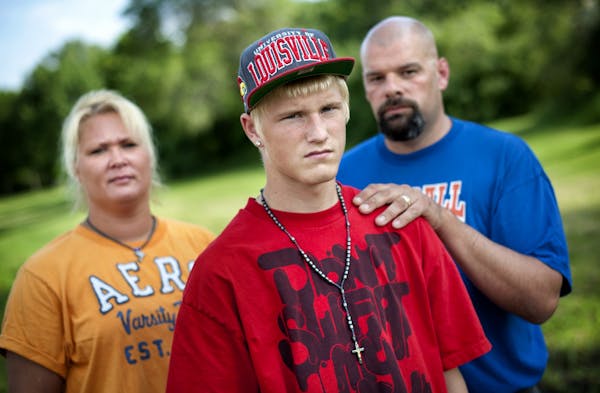Just how far can school officials go in restricting what students wear?
Clearly, school leaders can and should impose dress codes that keep students safe and are conducive to learning. But in a recent local case involving rosary beads, officials overreached.
Last week, officials at Coon Rapids High School asked 15-year-old Jake Balthazor to remove (or tuck into his shirt) rosary beads he wears around his neck. They cited safety concerns, because rosaries have been used as gang symbols. The teen complied.
But Balthazor and his family understandably believe the request was unfair. Jake said he isn't in a gang and that he and others had worn the beads in school without incident for several months. Balthazor received the beads from his grandmother and wears them to express concern for her health; she recently had breast-cancer surgery.
Rosary beads are used for prayer, primarily in the Catholic faith. Balthazor, who is Lutheran, said he did not wear them for religious reasons but as a tribute to his grandmother.
A spokesperson for the Anoka-Hennepin school district said that administrators added rosaries to the district's list of banned attire after they recently received a memo from the Coon Rapids police department about how some Latin gangs in some places were wearing the beads as a symbol of membership. As a result of the feedback about Balthazor's concerns, district administrators will review their dress-code policy.
District officials said they are not aware of any student being harmed because of wearing a rosary. So why place the item on a ban list if such problems have occurred only in other parts of the country? Caution in such matters is warranted, but it must be balanced with respect for students' reasonable right to self-expression.
The Anoka-Hennepin dress code policy says that administrators may take action to restrict "[s]tudent attire and/or personal grooming which creates a danger to health or safety; creates a disruption to the educational process, or violates common standards of decency as they apply to a community school setting, and/or any apparel, jewelry, accessories, or matter of grooming which ... denotes membership in an organized gang."
That rightly gives individual school administrators plenty of discretion. But we'd hate to see too many items that have perfectly good, nongang uses make the list. Some gang members are known to wear plain white T-shirts, for example. Could those be banned?
In a 2010 case in New York state, a school district settled with a middle-school boy and his family for nearly $23,000. Schenectady school officials had indefinitely suspended seventh-grader Raymond Hosier for wearing a rosary in class. The family filed a federal lawsuit, but the district agreed to settle and amend its policy to remove the rosary ban.
The Coon Rapids case wouldn't go that far, as no disciplinary action was taken. Admittedly, schools are in a difficult spot when it comes to deciding whether certain types of clothing are safety risks. Yet the New York case is a reminder to districts that they need to be careful in more ways than one when considering what should -- or should not -- be part of dress codes.
-------------------
Readers, what do you think? To offer an opinion considered for publication as a letter to the editor, please fill out this form. Follow us on Twitter @StribOpinion and Facebook at facebook.com/StribOpinion
Ukraine aid vote is a domestic and geopolitical inflection point



